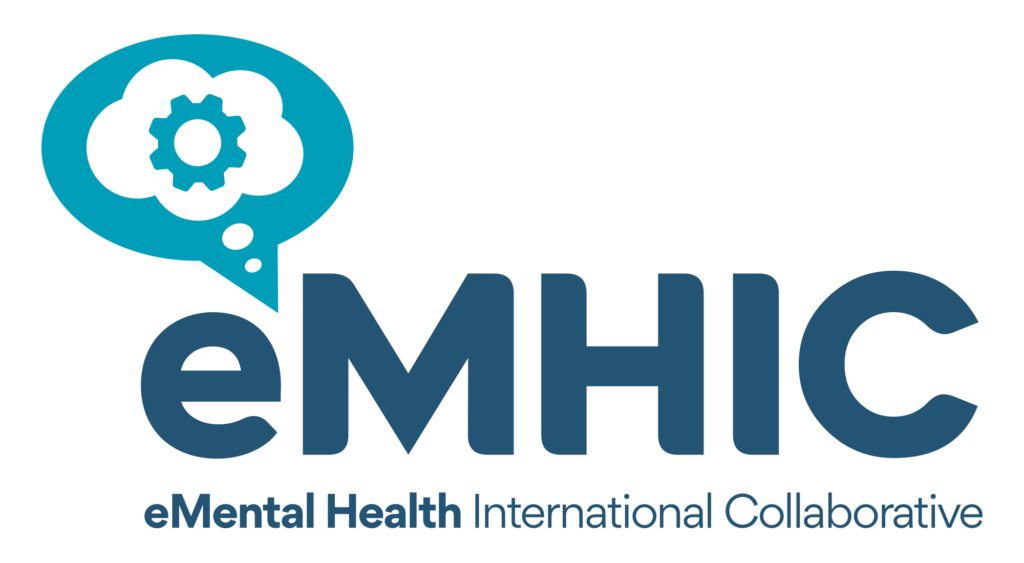Abstract
Globally, most young people living with mental health conditions lack access to mental health care but have access to a mobile device. The growing access to mobile devices in South Africa has the potential to increase access to mental health care services through digital platforms. However, uptake of digital mental health interventions may be hampered by several factors, such as privacy, confidentiality, informed consent, and affordability.
This study identified the prospects and challenges of implementing a mobile phone-based mental health intervention for young people in Ingwavuma area. Data were collected from 93 young people in three villages purposefully selected in Ingwavuma area. Participants included in the study were aged 16–24. Data were collected through a questionnaire. Thematic and descriptive analysis was performed on the qualitative and quantitative data, respectively. Mental health education was low, with only 22% of participants having received prior education on mental health. About 50% of the participants had come across a mental health app, but none of them had used any of these apps; 87% of participants had Internet access; 60% preferred to use social media to contact a health worker; and 92% suggested that use of digital apps would improve mental health literacy among young people.
Barriers to access of digital mental health interventions were identified as the high cost of data, restrictive religious beliefs, limited privacy, lack of native languages on most digital platforms, low digital literacy, and complicated user interface. In uMkhanyakude, uptake of digital mental health apps among the young people was low. We recommend that, developers create context-specific digital applications catered for young people from different cultural backgrounds. Socio-economic issues such as affordability also need to be addressed in developing these tools.
Key Takeaways
- “Approximately one in every six South Africans may develop a common mental disorder (depression, anxiety, or drug use disorder) [8]. The South Africa Stress and Health survey revealed a 16.5% 12-month prevalence of common mental disorders (CMDs) which included anxiety, mood, impulse control and substance use disorders [9]”
- “The COVID-19 pandemic led many health policy makers to recognize the need for accessible mental health support in rural and urban areas [12]. Albeit disastrous, the pandemic also led to the increased use, and adoption of digital health services [13]. Currently, South Africa has a shortage of mental health care workers and a low uptake of mental health services. The use of mobile phones and social media platforms can provide a solution in closing the gap between health facilities and patients needing mental health support. “
- “In sub-Saharan Africa the treatment gap for people with mental, neurological and substance abuse disorders is vast with only 10% of these people receiving treatment [26]. We found that there was a need for increasing mental health literacy for young people (preferably) using accessible online platforms such as social media. Young people could benefit a lot if they were taught about mental health on their social media platforms.”
- “We did not come across any apps, or IT based interventions produced in South Africa meant to be used directly by young people. This is a challenge that needs to be addressed, because we realize that most mental health apps in the market are not tailored for African young people. “
- “There is a need to make these social media-based interventions culturally relevant, free to access, private and user-friendly in order to increase use by young people.”
- “Post the COVID 19 era, many people and health institutions are considering investment in more web-based solutions for helping patients, and it is therefore key to understand what works for young people and what does not. This study provided this information in the context of a rural setting.”
References
- Kieling, C.; Baker-Henningham, H.; Belfer, M.; Conti, G.; Ertem, I.; Omigbodun, O.; Rohde, L.A.; Srinath, S.; Ulkuer, N.; Rahman, A. Child and adolescent mental health worldwide: Evidence for action. Lancet 2011, 378, 1515–1525. [Google Scholar] [CrossRef]
- Mokitimi, S.; Schneider, M.; De Vries, P.J. Child and adolescent mental health policy in South Africa: History, current policy development and implementation, and policy analysis. Int. J. Ment. Health Syst. 2018, 12, 36. [Google Scholar] [CrossRef] [PubMed]
- Herrman, H.; Saxena, S.; Moodie, R. Promoting Mental Health: Concepts, Emerging Evidence, Practice: A Report of the World Health Organization, Department of Mental Health and Substance Abuse in Collaboration with the Victorian Health Promotion Foundation and the University of Melbourne; World Health Organization: Geneva, Switzerland, 2005. [Google Scholar]
- Flisher, A.J.; Dawes, A.; Kafaar, Z.; Lund, C.; Sorsdahl, K.; Myers, B.; Thom, R.; Seedat, S. Child and adolescent mental health in South Africa. J. Child Adolesc. Ment. Health 2012, 24, 149–161. [Google Scholar] [CrossRef]
- WHO. Global Status Report on Alcohol and Health 2014; World Health Organization: Geneva, Switzerland, 2014. [Google Scholar]
- Hlungwani, E.N.; Ntshingila, N.; Poggenpoel, M.; Myburgh, C.P. Experiences of parents with an adolescent abusing substances admitted to a mental health institution in Giyani, South Africa. Curationis 2020, 43, e1–e9. [Google Scholar] [CrossRef]
- Blum, R.W.; Nelson-Mmari, K. The health of young people in a global context. J. Adolesc. Health 2004, 35, 402–418. [Google Scholar] [CrossRef] [PubMed]
- Lund, C.; Petersen, I.; Kleintjes, S.; Bhana, A. Mental health services in South Africa: Taking stock. Afr. J. Psychiatry 2012, 15, 402–405. [Google Scholar] [CrossRef] [PubMed][Green Version]
- Petersen, I.; Lund, C. Mental health service delivery in South Africa from 2000 to 2010: One step forward, one step back. S. Afr. Med. J. 2011, 101, 751–757. [Google Scholar]
- WHO. Depression and Other Common Mental Disorders: Global Health Estimates; World Health Organization: Geneva, Switzerland, 2017. [Google Scholar]
- Rao, U.; Chen, L.-A. Characteristics, correlates, and outcomes of childhood and adolescent depressive disorders. Dialogues Clin. Neurosci. 2022, 11, 45–62. [Google Scholar] [CrossRef]
- Rodriguez-Villa, E.; Naslund, J.; Keshavan, M.; Patel, V.; Torous, J. Making mental health more accessible in light of COVID-19: Scalable digital health with digital navigators in low and middle-income countries. Asian J. Psychiatry 2020, 54, 102433. [Google Scholar] [CrossRef]
- Anthony Jnr, B. Implications of telehealth and digital care solutions during COVID-19 pandemic: A qualitative literature review. Inform. Health Soc. Care 2021, 46, 68–83. [Google Scholar] [CrossRef]
- Naslund, J.A.; Gonsalves, P.P.; Gruebner, O.; Pendse, S.R.; Smith, S.L.; Sharma, A.; Raviola, G. Digital innovations for global mental health: Opportunities for data science, task sharing, and early intervention. Curr. Treat. Options Psychiatry 2019, 6, 337–351. [Google Scholar] [CrossRef]
- Mbunge, E.; Batani, J.; Gaobotse, G.; Muchemwa, B. Virtual healthcare services and digital health technologies deployed during coronavirus disease 2019 (COVID-19) pandemic in South Africa: A systematic review. Glob. Health J. 2022, 6, 102–113. [Google Scholar] [CrossRef] [PubMed]
- Mehl, G.L.; Tamrat, T.; Bhardwaj, S.; Blaschke, S.; Labrique, A. Digital health vision: Could MomConnect provide a pragmatic starting point for achieving universal health coverage in South Africa and elsewhere? BMJ Glob. Health 2018, 3, e000626. [Google Scholar] [CrossRef]
- Naslund, J.A.; Aschbrenner, K.A.; Araya, R.; Marsch, L.A.; Unützer, J.; Patel, V.; Bartels, S.J. Digital technology for treating and preventing mental disorders in low-income and middle-income countries: A narrative review of the literature. Lancet Psychiatry 2017, 4, 486–500. [Google Scholar] [CrossRef] [PubMed][Green Version]
- Chan, S.R.; Torous, J.; Hinton, L.; Yellowlees, P. Mobile tele-mental health: Increasing applications and a move to hybrid models of care. Healthcare 2014, 2, 220–233. [Google Scholar] [CrossRef][Green Version]
- Winchester, M.S.; King, B. Decentralization, healthcare access, and inequality in Mpumalanga, South Africa. Health Place 2018, 51, 200–207. [Google Scholar] [CrossRef]
- Couper, I. Place in the Sun: Reflections on Relationships, Rules and Rurality; Stellenbosch University: Stellenbosch, South Africa, 2018. [Google Scholar]
- Velaga, N.R.; Beecroft, M.; Nelson, J.D.; Corsar, D.; Edwards, P. Transport poverty meets the digital divide: Accessibility and connectivity in rural communities. J. Transp. Geogr. 2012, 21, 102–112. [Google Scholar] [CrossRef][Green Version]
- Coetzee, H.C.; Nell, W.; Van Eeden, E.S.; De Crom, E.P. Artisanal fisheries in the Ndumo area of the lower Phongolo River floodplain, South Africa. Koedoe Afr. Prot. Area Conserv. Sci. 2015, 57, a1248. [Google Scholar] [CrossRef]
- Manyangadze, T.; Chimbari, M.J.; Gebreslasie, M.; Mukaratirwa, S. Risk factors and micro-geographical heterogeneity of Schistosoma haematobium in Ndumo area, uMkhanyakude district, KwaZulu-Natal, South Africa. Acta Trop. 2016, 159, 176–184. [Google Scholar] [CrossRef]
- Lakshminarasimhappa, M. Web-based and smart mobile app for data collection: Kobo Toolbox/Kobo collect. J. Indian Libr. Assoc. 2022, 57, 72–79. [Google Scholar]
- Keeley, B. The State of the World’s Children 2021: On My Mind—Promoting, Protecting and Caring for Children’s Mental Health; UNICEF: New York, NY, USA, 2021. [Google Scholar]
- Chibanda, D.; Abas, M.; Musesengwa, R.; Merritt, C.; Sorsdahl, K.; Mangezi, W.; Bandawe, C.; Cowan, F.; Araya, R.; Gomo, E. Mental health research capacity building in sub-Saharan Africa: The African mental health research initiative. Glob. Ment. Health 2020, 7, e8. [Google Scholar] [CrossRef] [PubMed][Green Version]
- Kutcher, S.; Perkins, K.; Gilberds, H.; Udedi, M.; Ubuguyu, O.; Njau, T.; Chapota, R.; Hashish, M. Creating evidence-based youth mental health policy in sub-Saharan Africa: A description of the integrated approach to addressing the issue of youth depression in Malawi and Tanzania. Front. Psychiatry 2019, 10, 542. [Google Scholar] [CrossRef] [PubMed]
- Wartella, E.; Rideout, V.; Montague, H.; Beaudoin-Ryan, L.; Lauricella, A. Teens, health and technology: A national survey. Media Commun. 2016, 4, 13–23. [Google Scholar] [CrossRef]
- Schueller, S.M.; Hunter, J.F.; Figueroa, C.; Aguilera, A. Use of digital mental health for marginalized and underserved populations. Curr. Treat. Options Psychiatry 2019, 6, 243–255. [Google Scholar] [CrossRef]
- Dennison, L.; Morrison, L.; Conway, G.; Yardley, L. Opportunities and challenges for smartphone applications in supporting health behavior change: Qualitative study. J. Med. Internet Res. 2013, 15, e2583. [Google Scholar] [CrossRef] [PubMed]
- Naslund, j. A. ; bondre, a. ; torous, j. ; aschbrenner, k. A. Social media and mental health: benefits, risks, and opportunities for research and practice. J. Technol. Behav. Sci. 2020, 5, 245-257.
- Staffileno, b. A. ; zschunke, j. ; weber, m. ; gross, l. E. ; fogg, l. ; tangney, c. C. The feasibility of using facebook, craigslist, and other online strategies to recruit young african american women for a web-based healthy lifestyle behavior change intervention. J. Cardiovasc. Nurs. 2017, 32, 365-371
- Livingston, J.D.; Cianfrone, M.; Korf-Uzan, K,; Coniglio, C. Another time point, a different story: One year effects of a social media intervention on the attitudes of young people towards mental health issues. Soc. Psychiatry Psychiatr. Epidemiol. 2014, 49, 985-990. [Google Scholar] [Cross Ref]
- Naslund, J.A.; Aschbrenner, K.A.; Marsch, L.A.; Bartels, S.J. The future of mental health care: Peer-to-peer support and social media. Epidemiol. Psychiatr. Sci. 2016, 25, 113–122. [Google Scholar] [CrossRef][Green Version]
Naslund, J.A.; Aschbrenner, K.A.; McHugo, G.J.; Unützer, J.; Marsch, L.A.; Bartels, S.J. Exploring opportunities to support mental health care using social media: A survey of social media users with mental illness. Early Interv. Psychiatry 2019, 13, 405–413. [Google Scholar] [CrossRef]
Ahmad, J.; Joel, U.C.; Talabi, F.O.; Bibian, O.N.; Aiyesimoju, A.B.; Adefemi, V.O.; Gever, V.C. Impact of social media-based intervention in reducing youths’ propensity to engage in drug abuse in Nigeria. Eval. Program Plan. 2022, 94, 102122. [Google Scholar] [CrossRef] [PubMed]
Naslund, J.A.; Aschbrenner, K.A. Risks to privacy with use of social media: Understanding the views of social media users with serious mental illness. Psychiatr. Serv. 2019, 70, 561–568. [Google Scholar] [CrossRef] [PubMed]
Weyer, D.; Bezerra, J.C.; De Vos, A. Participatory mapping in a developing country context: Lessons from South Africa. Land 2019, 8, 134. [Google Scholar] [CrossRef]
Gillwald, A.; Mothobi, O.; Rademan, B. The state of ICT in South Africa. 2018. Available online: https://www.africaportal.org/publications/state-ict-south-africa/ (accessed on 18 August 2022).
Venter, M.; Craffert, L.; Van Greunen, D.; Veldsman, A.; Candi, M.; Sigurdarson, H. Diagnosis of the Digital Landscape in South Africa-Skills, Infrastructure and Available Technologies. European Union Erasmus Plus. 2019. Available online: https://project.commongoodfirst.com/wp-content/uploads/2019/11/D2.4-Consolidated-Overview.pdf (accessed on 19 August 2022).
Pather, S.; Booi, E. An Assessment of Student Resource Readiness for Online Learning during COVID 19: A South African Case Study. In Proceedings of the ICERI2020 Conference, Online, 15–17 September 2020. [Google Scholar]




